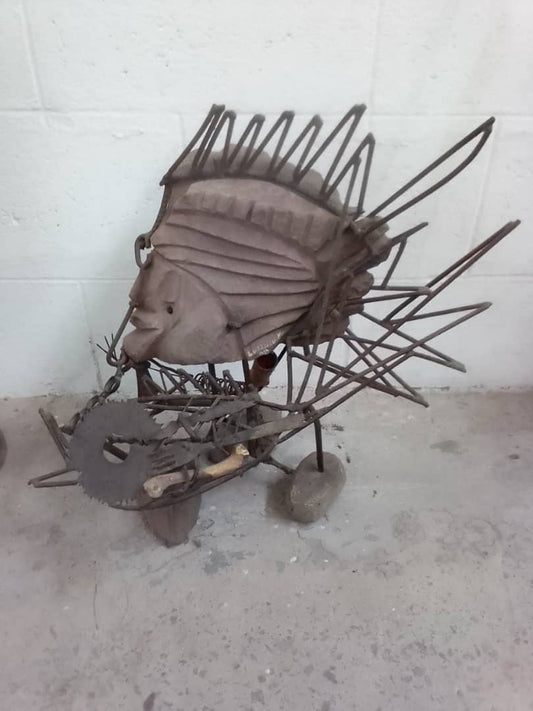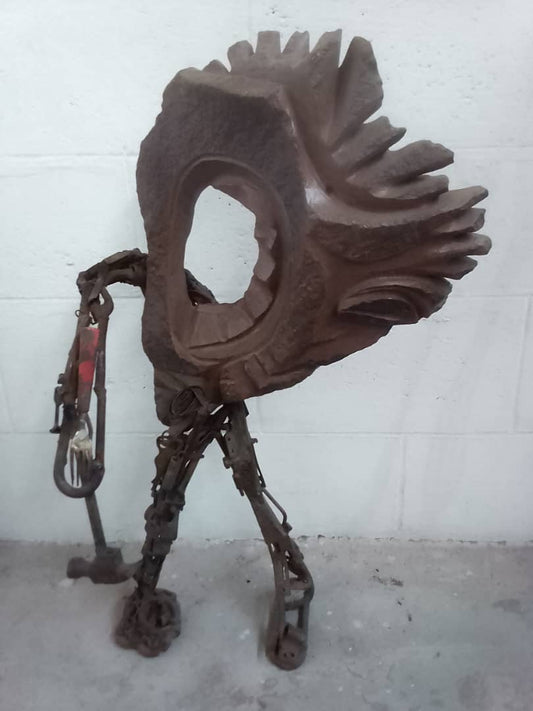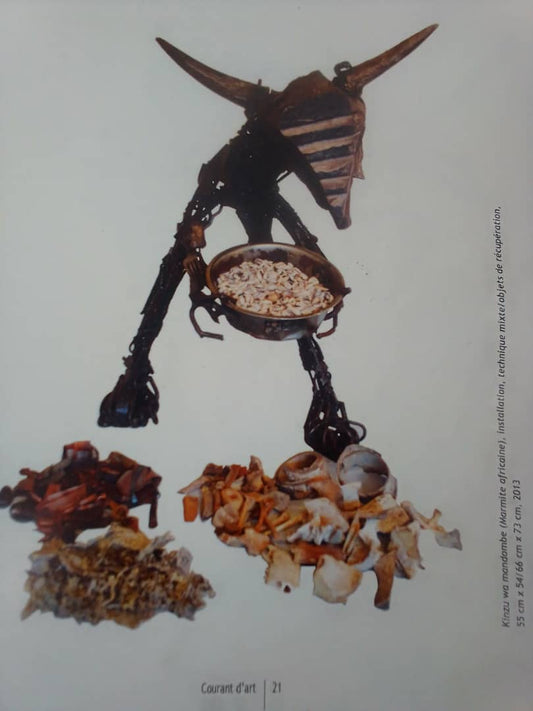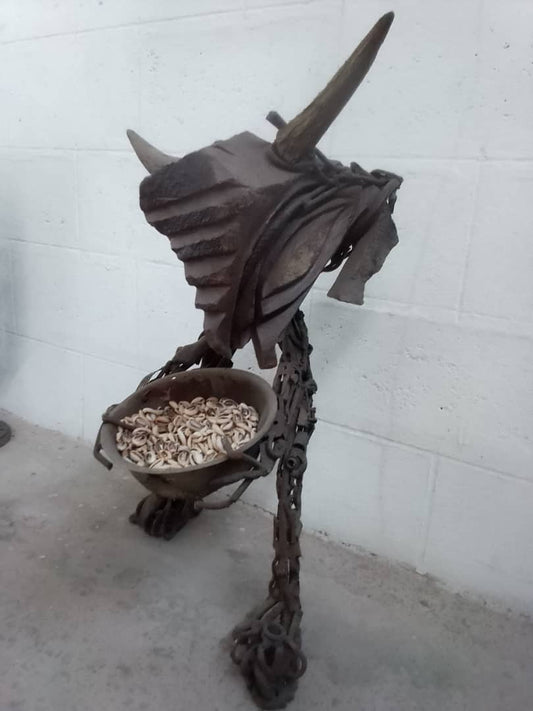Teddy Lusansu - A True Master of the Assemblage Art Genre
Born in Kinshasa in 1980, sculptor Teddy LUSANSU D has spent his entire life in his hometown, where he pursued his studies while honing his artistic talents.
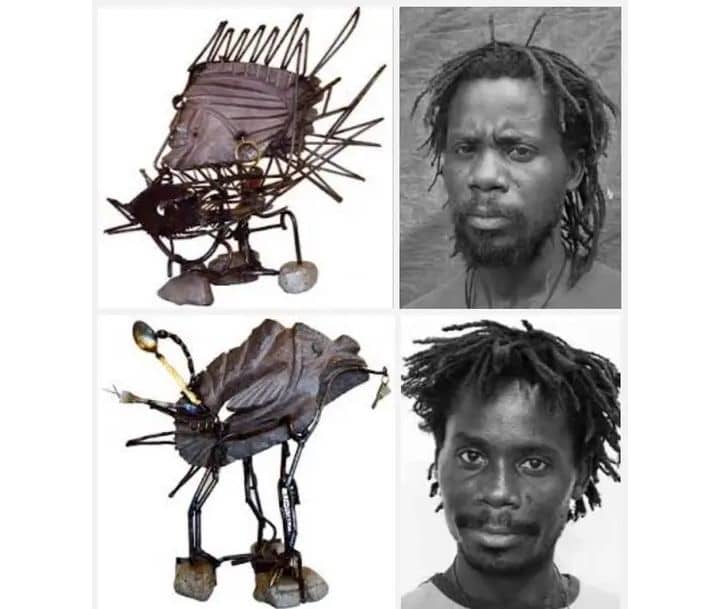
Teddy Lusansu
Born in Kinshasa in 1980, sculptor Teddy LUSANSU D has spent his entire life in his hometown, where he pursued his studies while honing his artistic talents. From 1997 to 2000, he apprenticed under Congolese sculptor Hassan Tshamala, mastering the technique of wood carving. Later, between 2000 and 2003, he worked alongside sculptor Kamanda, learning to appreciate and sculpt stone with unique forms. In 2006, he began incorporating welding into his work, allowing him to fully express his artistic vision using a variety of hard materials.
His sculptures are made of carved stones (rubble), scraps of iron, shrapnel, collected from workshops and public places, as well as other recycled materials gathered from public dumps.
His works are objects of worship, in the sense of the immense admiration for his "Kongo" culture, which he does not overlook in his discursive references focused on current issues.
Various shells such as snail and cowrie shells, horns, pieces of red fabric, and palm nuts are some of the organic and non-organic elements found in his sculptural compositions.
Materials that, along with the metals and stones mentioned above, blend together to embody what the artist calls "Luyalu" (power, authority). This magnifies the splendor and creative genius of ancient entities, now overlooked by his contemporaries.
A concept drawn from Kikongo, his native language, which he literally defines as "power". This power is viewed from various angles and takes on forms and meanings in the context of each work. The Bakongo culture, strong and giving prominence to ancestor worship in seeking solutions to current problems, greatly influences his universe. Hence, his works are generally titled in Kikongo, such as: Ngo zulu (Air Leopard), Ntekolo wa nkumba (I am an nkongo heir), Mena Kuntima (The kept secret), etc.
It is not surprising to find ancestral elements that characterized the famous statuary of this people, filling renowned museums in the West. These ancestral achievements are commonly known as Mfumani, Mintadi, Minkishi (nail fetish), Nkondi Kisi, etc. They were functional objects that resolved crises; they also protected and preserved tradition.
Lusansu is a contemporary artist, both temporally and conceptually. He draws from his heritage while bringing his own contribution, according to the spatiotemporal context in which he lives, not without being concerned about what is happening globally.
In his latest works, the subjects are thin and acrobatic, somewhat reminiscent of representations of rock art. A reference to the notion of art as the writing of a people's life and a vector of sensitivities, both concrete and abstract. In his verbal approach, the artist evokes writing as a present, important, and very significant element in ancestral African, Pharaonic, and imperial society, with hieroglyphic, Meroitic writing, etc., passing through the so-called Mandombe...
His participation in BISO 2023 will allow the artistic world to discover a glimpse of the journey to the past that this artist will undertake to bring back the dormant riches in the fading history of Africa. How much it is possible to draw on and renew visions in the rendezvous of giving and receiving, of course. The plan is to sculpt a work measuring 200X50cm titled: "NZO WA ZONO WA MAKONGO" which means "The house of KONGO culture," etc.


